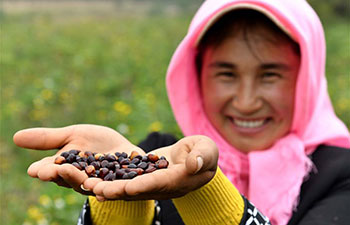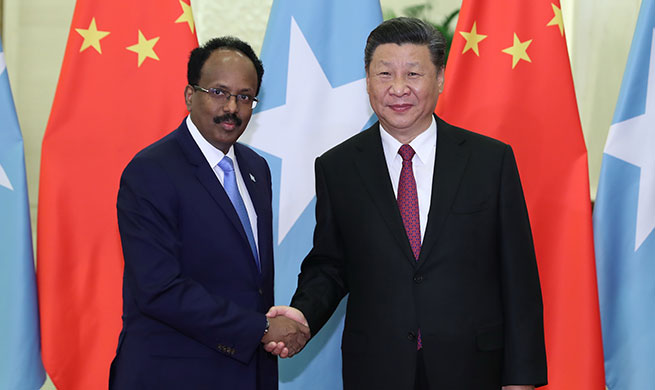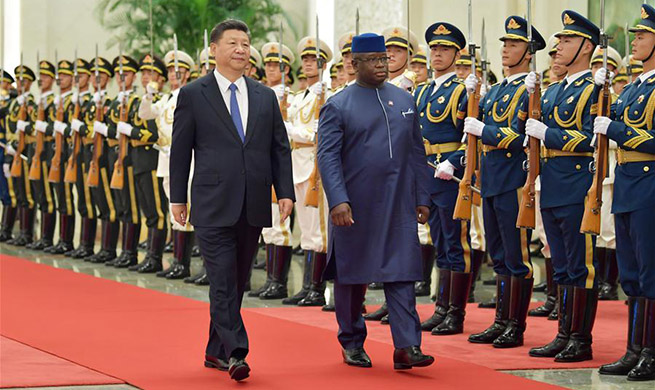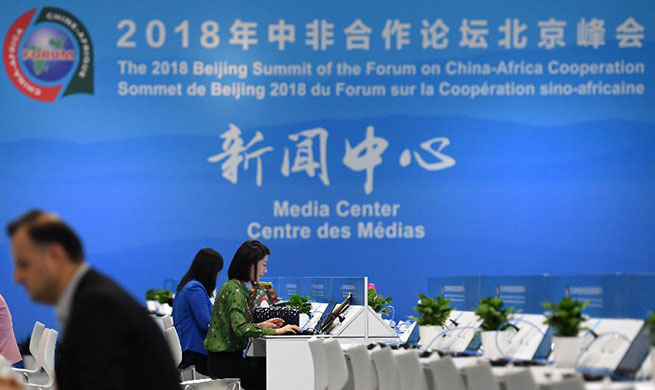by Peter Mertz
DENVER, the United States, Aug. 30 (Xinhua) -- The U.S. government earlier this week announced bailout subsidies to the tune of 6.3 billion U.S. dollars to farmers impacted by trade wars it initiated against its major trade partners, but farmers and economists see plenty wrong.
The measure came after the U.S. Department of Agriculture (USDA) in July announced a 12 billion-dollar aid package for a segment of farmers impacted by tariffs, a move that already triggered dissatisfaction among farmers then, who said it lacked operability and vision.
TILTED SCALE
"We were hoping it would be equitable, but it isn't," said National Corn Growers Association (NCGA) President Kevin Skunes.
Skunes, a farmer from North Dakota, and some economists told Xinhua they were asking the same question: How did the USDA determine what sector would receive how much money? And was it politically motivated?
"Why is there such a discrepancy between the payments to soybean producers and corn producers?" asked Anton Bekkerman, an agro-economics expert and economics professor of Montana State University (MSU). Bekkerman unveiled an analysis on the correlation between corn and soybean prices over the past 20 years.
"There is a long-run average ratio of 2.5. That is, soybean prices are about 2.5 times higher than corn prices," explained Bekkerman.
Bekkerman said that during President Donald Trump's tenure the ratio was higher, "but has recently returned," drawing question to the great difference in the support given to soy versus corn.
"We don't understand the formula he used," Skunes told Xinhua. "It doesn't make sense."
USDA and White House officials ignored data and requests for fairness last month in Washington when National Corn Growers Association (NCGA) officials, who represent a billion dollar industry, showed them data that corn prices had dropped by 44 cents a bushel.
Under Monday's allocations, corn, America's second largest export crop, will receive 946 million dollars in aid while top-trading soy will receive some 3.6 billion dollars.
"Our producers are pretty disappointed with the money. But we'll keep talking to them," Skunes said, referring to their ongoing discussions with USDA officials.
America's major corn producing states are Iowa, Illinois, Nebraska and Minnesota.
"It does point to the fact that these aid estimates came out of a black box," Bekkerman said.
"Many agricultural groups are concerned about the extent to which negative impacts of the trade disputes are ameliorated by the payments," he added, noting that future trade with China and other countries may be adversely impacted for years to come.
"Whenever you lose a market like China, it's hard to get it back," Skunes said, adding "China has been a good customer ... it took soy a long time to develop that market."
Many top U.S. economists continued their outspoken condemnation of a trade war versus traditional, proven trade agreements.
"The Trump administration's proposed payments to soybean farmers, hog producers and other commodity producers reflect the administration's folly in entering a tariff war with major trading partners rather than addressing trade dispute issues through negotiations and well established dispute resolution processes," economics professor Vincent Smith told Xinhua.
Smith, a 30-year professor at MSU and visiting scholar at the esteemed Washington conservative think tank, The American Enterprise Institute, has been openly critical of the administration's economic trade war tactics.
Economists believed artificial price support systems underway by the Trump administration can hasten a recession.
POLITICAL BIAS
"The haste with which this program was rolled out also seems to coincide with the timing of the upcoming midterm elections," Bekkerman noted.
Under the USDA plan, farmers in Midwestern states such as Indiana and Iowa, which backed Trump in 2016, will receive huge amounts of money just before the midterm elections in November.
Meanwhile, specialty produce, wine, and nut-growing states, like heavily Democratic California, will be short of gift from the government.
"Shameless vote buying by the president," said political analyst David B. Richardson.
"This is strong evidence of (Trump's) sensitivity to losing support in the Midwest," said Scott Irwin, an agricultural economist at the University of Illinois.
Illinois State and its Democratic stronghold city Chicago went to Hillary Clinton in the 2016 presidential elections, as did California.
"Trump is also punishing states that he lost," Richardson told Xinhua.
Federal agricultural programs are based on market outcomes, and assistance payments aren't fully determined or made until much later in the marketing year, but not this time, said Bekkerman.
USDA spokesman Tim Murtaugh defended the timing, telling the media that the rollout was connected to farmers' harvest times and not to any political calendar. For most row crops, farmers harvest in the fall.
FURTHER WEST
With most federal subsidies going to soy and pork farmers, wheat growers in the states of Kansas, North Dakota, and Montana, were also feeling left off the president's gift list.
"Farm income is down, and rural America is enduring a prolonged economic downturn," said Jimmie Musick, president of the National Association of Wheat Growers (NAWG).
"This relief package shows that the administration isn't grasping the tough conditions being faced by farmers. The long-term solution is to end the trade war," he told the National Public Radio.
NAWG officials showed the USDA data last month indicating prices could fall by 75 cents a bushel resulting in nearly 2.5 billion dollars in losses. But wheat growers will get just 119 million dollars in subsidies.
"We recognize that this can only be a short term fix and that open markets and fair trade deals are the only long term solution to a sustainable agricultural economy in the U.S.," Montana Farm Bureau President John Youngberg told Xinhua.
Many farm leaders in those states won by Trump in the 2016 elections also held hope that the president's brash strategy would yield positive results down the road.
"We are hopeful that negotiations will continue and a solution to our trade differences can be found soon," said Lola Raska of the Montana Grain Growers Association (MGGA).
"We appreciate the recognition by our administration that our farmers are being harmed by the ongoing trade dispute with China," she added.











